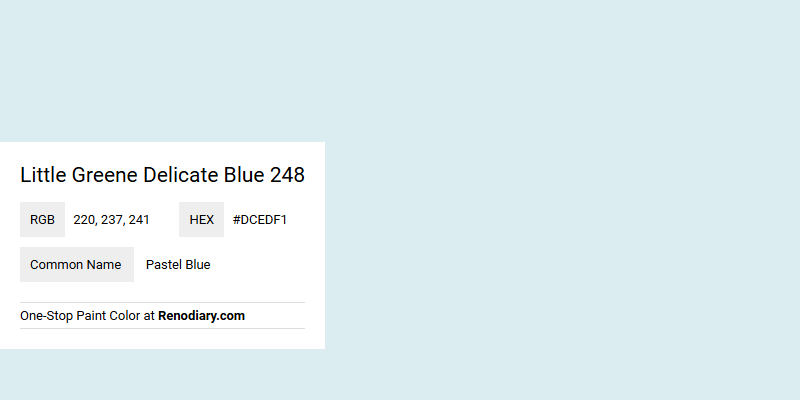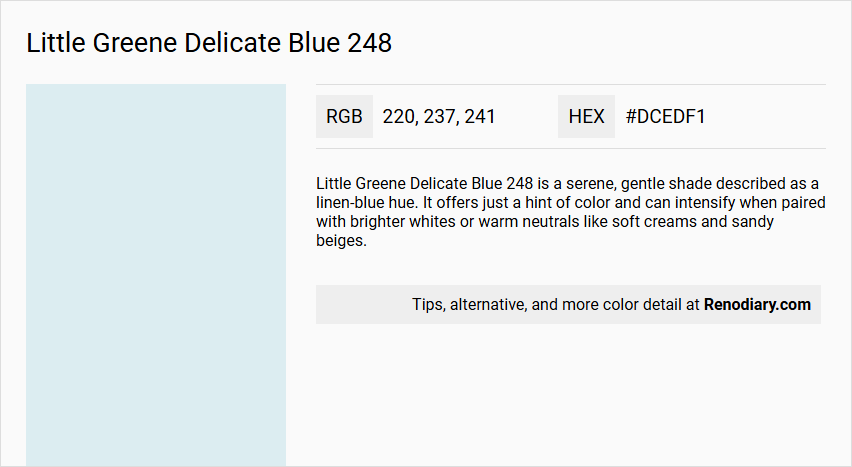
Little Greene Delicate Blue 248, characterized by its RGB values of (220, 237, 241), is commonly referred to as Pastel Blue. This light, airy hue embodies a sense of calm and serenity, making it an ideal choice for creating tranquil spaces in interiors. Its subtle blend of colors evokes the soft, soothing ambiance often associated with peaceful skies and gentle ocean waves.
Color Description
Little Greene Delicate Blue 248 is a serene, gentle shade described as a linen-blue hue. It offers just a hint of color and can intensify when paired with brighter whites or warm neutrals like soft creams and sandy beiges.
Undertones
The undertone of Delicate Blue is accurately described as a blue hue, without any significant tints, tones, or shades that would alter its primary blue character.
Color Values
- HEX value: #DCEDF1
- RGB code: 220, 237, 241
Usage
Delicate Blue is versatile and can be used in various settings, including bedrooms, bathrooms, and other rooms where a calming atmosphere is desired. It pairs well with complementary greys, such as Urbane Grey, and can be combined with other colors like Flint or Loft White for a cohesive look. It also works well in both traditional and contemporary decor styles.
Atmosphere
This color creates a calming and serene atmosphere, making it ideal for spaces where tranquility is desired. It adds a touch of elegance and can be enhanced by incorporating accents in other shades to create a sophisticated color palette.
Little Greene Delicate Blue 248 Color Alternative
Little Greene Delicate Blue 248 offers a versatile base that inspires several excellent alternatives for different design contexts. Benjamin Moore Irish Mint 2041-70, Behr Bellflower Blue M540-1, and RAL Effect RAL 180-6 each bring their own unique flair while maintaining a harmonious relationship with Little Greene Delicate Blue 248. By considering these alternatives, designers can explore subtle variations and complementary moods that enhance the overall aesthetic of any space.
Bathroom
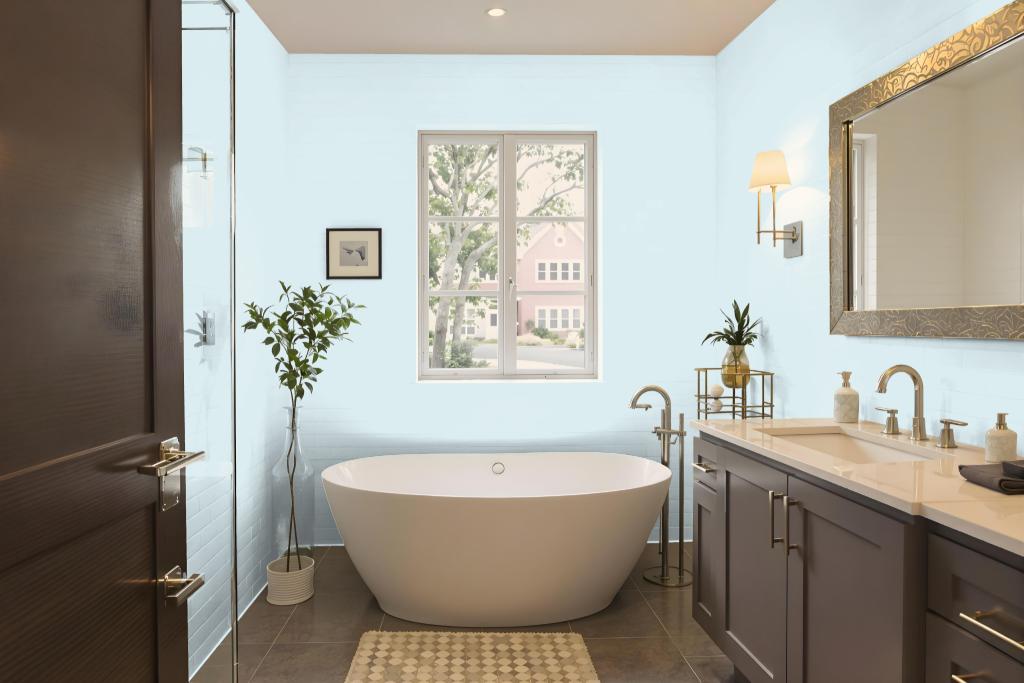
Little Greene Delicate Blue 248 is a superb choice for bathroom walls that brings a serene charm while addressing practical needs. Its finish is engineered to stand up to moisture, staining, and the rigors of everyday use, ensuring a durable, washable surface in high-humidity environments.
This water-based application is environmentally friendly and certified as child-safe, with no added VOCs. Beyond walls, it works effectively on primed interior metalwork such as radiators and pipework, offering a cohesive look throughout the space while providing excellent coverage and quick drying properties.
Bedroom
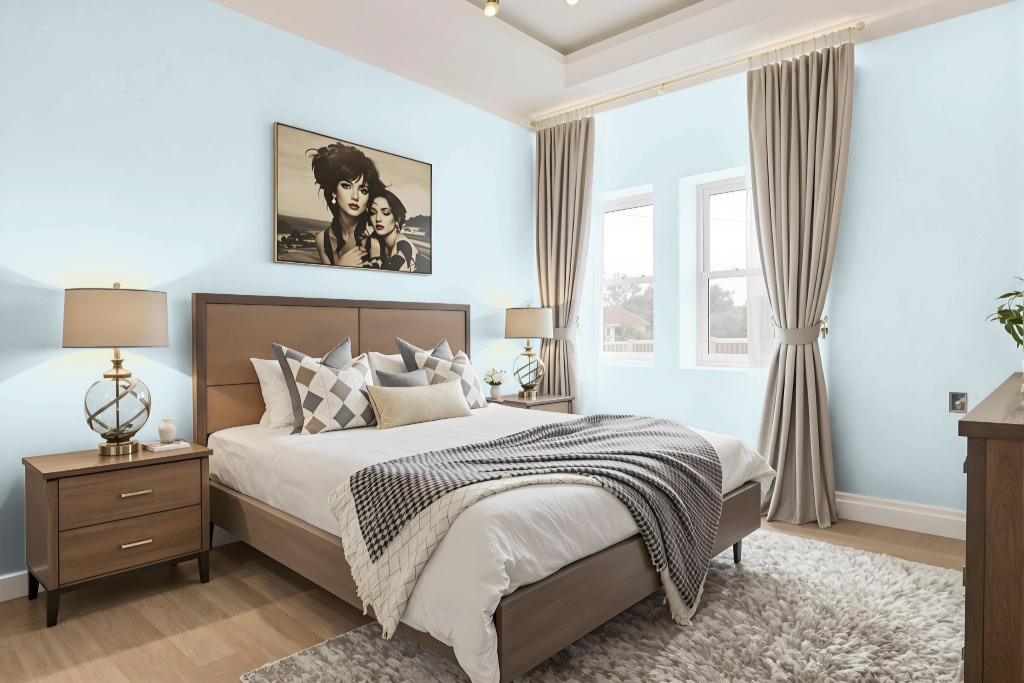
For a bedroom color scheme, Little Greene Delicate Blue 248 sets a calming tone that can be enhanced with warm neutrals like soft creams and sandy beiges, lending a refined elegance to the space. This balanced foundation can be accentuated with complementary shades such as Chimichurri Green or Deep Space Blue, creating an engaging yet sophisticated palette that remains timeless when paired with whites like Flint or Loft White and greys such as Urbane Grey.
For those interested in a monochromatic approach, exploring various tints and shades of Delicate Blue can maintain a serene aesthetic, though the addition of accent decor is encouraged to break any potential monotony and add depth to the overall design.
Kitchen
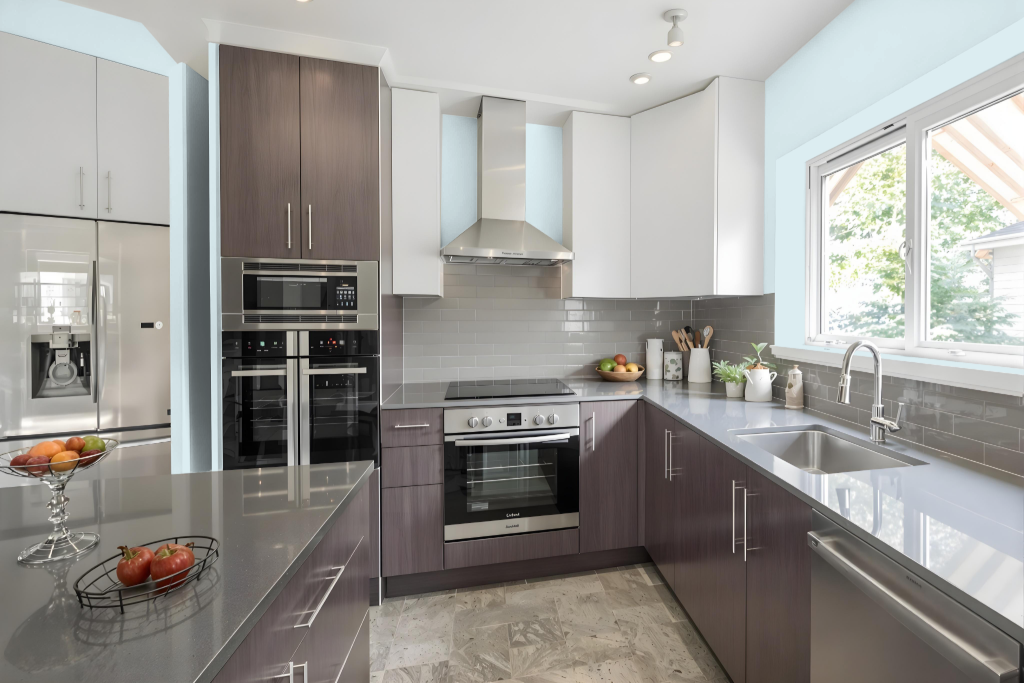
For a kitchen color scheme, Little Greene Delicate Blue 248 sets a calm and stylish tone. Warm neutrals such as soft creams and sandy beiges highlight its gentle character, while accents in complementary shades like Chimichurri Green or Deep Space Blue add a dynamic contrast that enhances the overall design.
Brighter whites like Flint or Loft White amplify the blue's intensity and create a harmonious interplay of colors, while introducing a complementary grey such as Urbane Grey brings additional depth and balance to the space.
Living Room
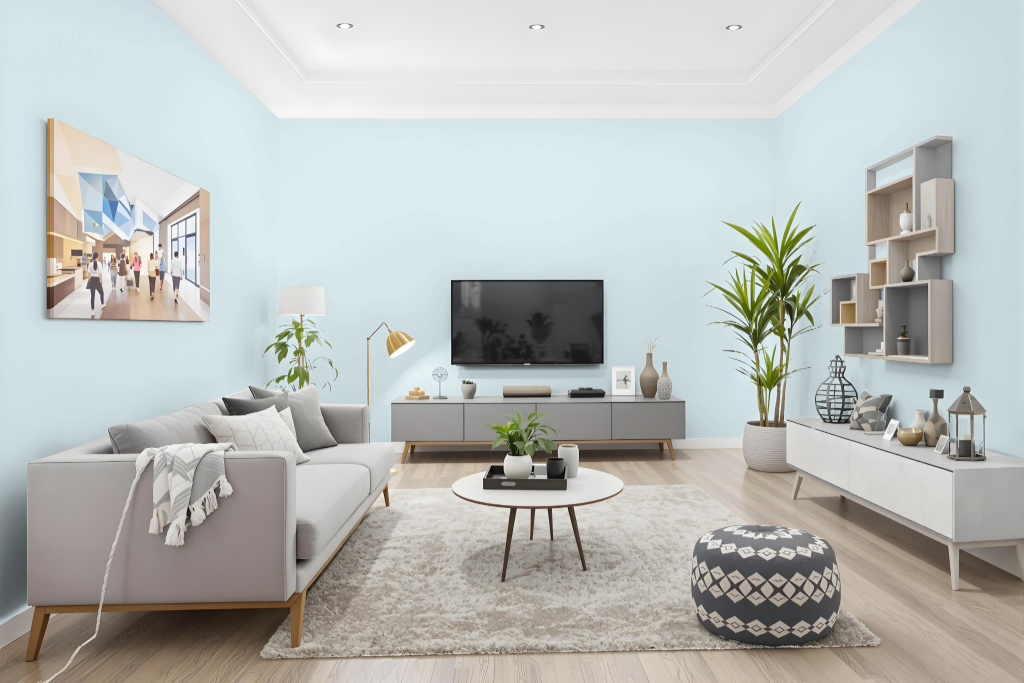
Little Greene Delicate Blue 248 is an excellent choice for a living room, bringing a calm yet dynamic character when paired with brighter whites. This shade enhances various lighting conditions and pairs harmoniously with coordinated whites and subtle neutrals, creating a unified and inviting atmosphere.
For added depth, consider incorporating contrasting dark accents alongside complementary hues to build a sophisticated palette. The chosen finish offers a flat, characterful look that performs well on interior walls and ceilings while being easy to maintain and environmentally considerate.
Outdoor
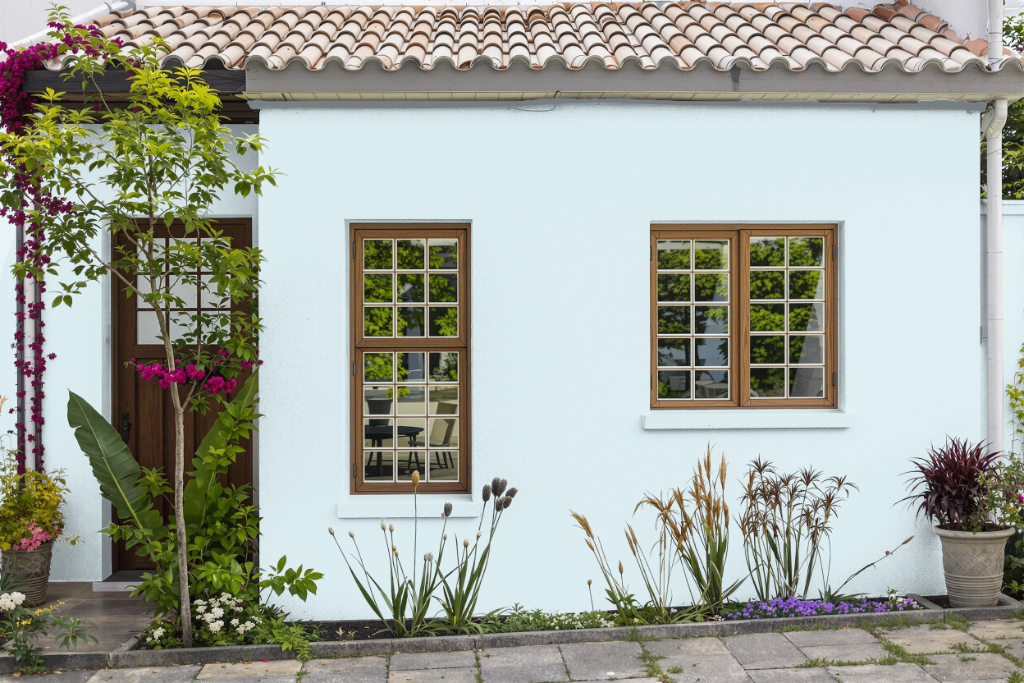
Home outdoor color Delicate Blue 248 brings enduring beauty to exterior surfaces while providing robust protection against the elements. Designed for homes exposed to harsh weather, this color supports paints engineered to resist fading, cracking, and peeling even in sun, wind, and rain.
Optimized for challenging climates, the paint is highly breathable, allowing moisture to escape from walls and thereby reducing the risk of dampness and mould buildup. This ensures a lasting, attractive finish that keeps exterior surfaces in excellent condition for years.
